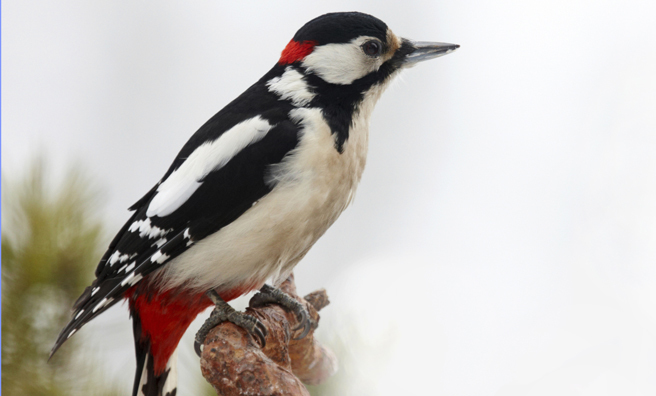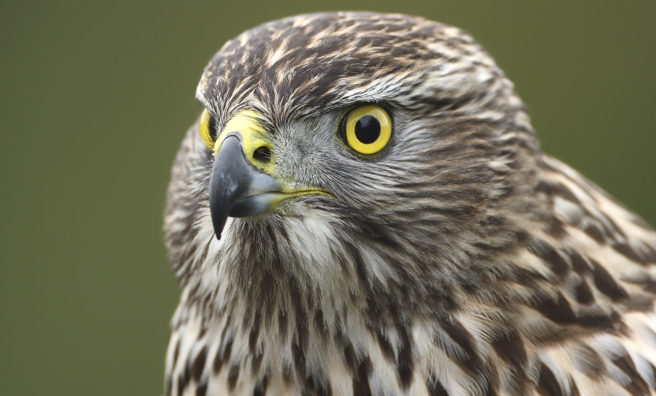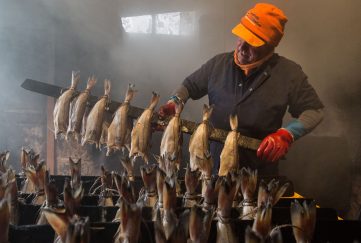Watching Woodland Carpenters

At last it is September, and I head for the woods.
Every season has its moments in the woods, but September is when my least favourite of all the seasons’ variations – late summer – blunders into a dawn like this one, and something in the changed air and the quiet yellowing of the light announces a reckoning.
By now, summer is jaded, blowsy and bloated, over-burdened with foliage that hangs about the boughs in lugubrious waves and top-heavy bouquets of dull, dull green. I have found a sodden path, one roe deer wide, that climbs through a great seasonal weariness of oaks, beeches and sycamores, and emerges suddenly into a high, airy clearing. And there, dancing to the hornpipe of a cool westerly, clusters of pale yellow-gold leaves on the slender drooping canopy of a six-feet-tall, two-inches-wide silver birch trunk flaunt the first gladdening portent. Right there, right on the edge of that clearing, right on the very spot where that stripling dancing birch has rooted, there is where autumn first stands up to be counted. It is a life-affirming moment, a moment of bearing witness as nature pronounces a change and something new begins.
A nondescript, far-carrying mono-syllabic “kick” moves around in the high larches and Scots pines, repeated at intervals, announcing to as much of the wood as cares to listen that great-spotted woodpeckers are up and doing.
They are the beavers of the canopy
I like these bright-eyed, black-and-white-and-vivid-red troupes of woodland carpenters. They are the beavers of the canopy, precise in their craftsmanship, always making trees work for them. The jaunty, bouncing flight traces a landscape outline of low hills and valleys through the spaces between trees, the falls and rises punctuated erratically by that echoing cry: “kick”, there… again… again, until a suitable trunk appears and the bird glides up to a wings-folded vertical landing.
These are quiet times, relatively speaking. The nesting season is done and the perceived need for woodpecker drumming diminishes (no need to warn off rival males or beckon to females who may or may not drum a favourable response; it’s a complex thing, the ritual of woodpecker courtship in a wood like this). By September, drumming may be nothing more than vocabulary, mundane bird-to-bird communication with no ulterior motives. But now I’m guessing.
The ground is littered with cones
Besides, I would like you to look at something up there, on the high side of the clearing, where an old larch tree appears to be bearing strange fruit. The larch trunk bisects about twenty feet up, and thrusts a substantial limb towards the south, almost horizontal at first before it heaves up at an angle of forty-five degrees. It is just here, directly beneath the point of the angle, that the ground is littered with cones. Something has put them there, and the something is a great-spotted woodpecker.
So far, so apparently straightforward – cones beneath a larch tree. Ah, but these are not larch cones, they are Scots pine cones. Look around: the nearest Scots pines are a hundred yards away, a dense stand of youngish trees rising dead straight from an understorey of heather and blaeberries that is quite unlike anything else in the wood. The pines may be young but they grow on the site of an old pinewood, for you don’t get an understorey like that in a single pinewood.
For much of the spring and summer, the great-spotted woodpecker feeds on the internal insect life of dead trees (except that, mysteriously, it prefers living oaks), using the battering ram of its beak and a uniquely designed uncoiling tongue to get at them. This is the way of almost all woodpeckers, but from now on, and increasingly as autumn yields to winter, the great-spotted turns to pine cone seeds. These it yanks from the parent tree and carries to an “anvil” – a slot in the bark of a nearby tree it has selected, and where it has often fashioned the slot itself. It presses the cone into the slot, then hammers out the seeds, eats them, and chucks away the cone. That is why this particular larch has acquired a hoard of cones in its shadow that don’t belong to it.
Studies of this peculiarity over the years have revealed some astounding numbers. One much quoted bird took up to 40 pine cones a day in 10 weeks, amassing a midden of around 3000 cones. The clutter beneath my September larch is only a few dozen but there’s a long way to go before next spring when the woodland insect life returns to the kind of quantities that can sustain its woodpecker population, so who knows?
There are a few million spruce trees at a woodpecker’s disposal
What I don’t know is how many woodpeckers are at work here, and whether or not that comparatively small gathering of pines is sufficient for their needs all winter long. Another thing I don’t know is whether or not individual birds have individual preferences in their diet – pine cones, not larch, for example, and considering that this is a Forestry Commission wood there are a few million spruce trees at a woodpecker’s disposal, too. Yet this cone midden beneath a solitary, conspicuous larch with a healthy crop of cones of its own, is exclusively pine.
In more open, more natural and much older and more southerly woods than this one, woodpeckers also eat beech and elm seeds and acorns. Not here, it seems. And this is getting towards the north-western edge of the bird’s reach, for Scotland is a north-western extremity of its range as a species, and its presence dwindles markedly to the north-west of the Great Glen, the last limit of a last limit, the extremity of an extremity. All, it seems, is dependent on suitable woodland habitat. Indeed, there was a time in the mid 19th century when the great-spotted woodpecker was considered extinct in Scotland, such was the enthusiasm for felling native woodland, and given that the Clearances and their attendant enthusiasm for sheep infestations and deer forests were also at their height, there wasn’t much of a vogue for woodland regeneration.
The prospects for the great-spotted woodpecker look healthier than at any time in the last 200 years
In time, of course, and once tree cover began to improve, birds began to drift north from England into empty territories, although numbers dived again after the toll two world wars took on the timber supply. By 1945 Scotland’s woodland cover was as low as five per cent. Somehow the birds clung on in numbers that cannot have amounted to much more than a last stand, but these were able to take advantage of new commission woods, the emergence and growth of the conservation movement, and the steady expansion of forest cover to today’s level of around 17 per cent, and given that the Scottish Government’s target is for 25 per cent, the prospects for the great spotted woodpecker look healthier than at any time in the last 200 years.
So at last it is September and in the woods I have found a tree stump in the edge of the clearing that is catching an hour of morning sun and gives me a clear view of the larch and the pines, and if there happens to be a woodpecker at work among the pines and threading an undulating path between the two, it will have to cross the clearing in bright sunlight and I can get an idea of how all this works.
I have a sparrowhawk for company for a while, working my patch of visible sky in spirals, but it drifts away, unfulfilled. A few minutes later, a second hawk arrives in a spruce tree at the far side of the clearing, a hint of movement in the corner of my eye. I see the bird shape as it perches, partly obscured by branches. I assume it is the same sparrowhawk returning for a second look. I change position slowly and carefully and level my binoculars on the spot. What snaps into focus is something like a sparrowhawk on steroids. It also wears a vivid white eyestripe, and these – the larger-than-life sparrowhawk shape and the eyestripe – are the hallmarks of a goshawk.
The rumour lives
There have been a rumour circulating on the grapevine about goshawks in this wood for months, but I could pin no-one and nothing down. Suddenly, by virtue of an hour-long stillness in search of answers to something else altogether, our paths cross. The rumour lives.
It occurs to me in a moment that the most conspicuous bird in this corner of the wood right now, a slow flier with apparently a habit of traversing the clearing from the pines to the larch, is a great-spotted woodpecker. If the goshawk has intentions of anything at all other than just passing through, there is at least one woodpecker in this wood whose chances of taking advantage of the new pro-forest climate are less than slim.
And suddenly he’s there. I hear him in the pines, here his “kick” calling card as he moves around the crowns of the trees. I can’t see him from here. I turn back to the goshawk, which is looking and listening. She kicks off low and fast out into the clearing and at once the air is full of the oaths of diving ravens. They have been perched somewhere above and behind me, I imagine, but at the sight of the huge hawk on their patch they galvanise in pursuit. The hawk is a low blur, fast and level and silent and a yard above the clearing floor, the ravens higher and locked into a loud-voiced dive.
The denouement is maddeningly hidden, for the hawk burrows deep into the trees where she is peerless in flight. The ravens climb above the trees then drop down beyond them, still shouting. Then nothing. No hawk, no raven, no woodpecker.
Just a thick scattering of pine cones beneath a tree that never bore them, and a bit of a mystery which has yet to unfold. But it’s only September. Autumn and the long Highland winter await, and now I know where to look and what I’m looking for.
- A young goshawk
- Jim Crumley
- A Great Spotted Woodpecker
Great-spotted facts
- Drumming has been recorded on weather vanes and metal poles – so not just trees!
- An unpaired male may drum as many as 600 times a day.
- The male bird has a patch of scarlet on the back of the neck, making it recognisable.
- Both sexes incubate the eggs which take 12 days to hatch.







